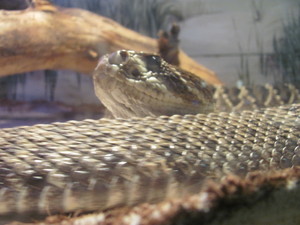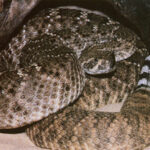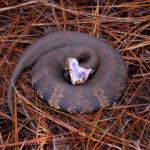Rattlesnake meat is one of the most tasty treats on the planet. Still, there are a great many people that are still uncertain about the safety of eating rattlesnake meat. It certainly is understandable why someone might be concerned about eating a creature that has the capacity to kill us with deadly venom. The truth is, there is no real danger at all from the rattlesnake meat itself.
It is no secret that I am a huge fan of protecting venomous reptiles of the world and the animal population in general. Certainly rattlesnakes are a part of this group and they deserve to be protected in the wild. In spite of this there are certain scenarios in which killing is justified. For example, if you were to happen across a rattlesnake in the wild when you are starving, it is certainly understandable to kill and eat it – survival is survival after all. I also believe that killing animals as a food source is what God intended. I do not believe that killing animals of any kind simply for sport is okay.
Rattlesnake meat can be easily prepared most anywhere with some basic necessities. If you are in the wild and come across a live rattlesnake, the most important thing to remember is that the rattlesnake is very deadly. A rattlesnake has the ability to strike at a distance that is equal to half of their body length. For most rattlesnake’s this will be about 3 feet or so. This measuring is far from an exact science and should not be taken literally. Any attempts to kill a rattlesnake in the wild for survival should be made from a distance of at least 10 feet or more. Not heeding this advice could literally cost you your life.
Killing the rattlesnake is no easy task either. The most effective is to hurl a very large rock at its head. Another somewhat effective method is to hit it with a very long stick repeatedly until it is dead. Rattlesnakes are unique in that they will often pretend that they are dead as a defense mechanism. Do not assume that a rattlesnake is dead simply because it stops moving. Make absolutely certain by either smashing their head or decapitating them. Keep in mind that a decapitated Rattlesnake head will still be fully capable of delivering a venomous bite. The body of a dead rattlesnake will also continue to move and has been known to literally slither off the pan while cooking. Do not ever handle the head of a rattlesnake with your hands regardless of whether it is dead or alive.
To prepare the rattlesnake meat in the wild you will first need to skin it. Begin by decapitating the head of the rattlesnake about 4 inches down the neck. Then you will hang the rattlesnake by the tail. Once the rattlesnake is hung up, cut the belly of the rattlesnake from end to end in a straight line. Once you make this incision, the meat and inside of the rattlesnake will easily separate from the skin. Remove all of the insides and internal organs of the snake.
Before you begin to cook the rattlesnake, you must first wash it thoroughly. Use cold water like what you might find in a creek or stream. Once the rattlesnake meat is thoroughly washed, you can cook the meat over the campfire safely. If you prefer your rattlesnake meat without bones, then they will become easy to remove after a short while on the fire pit.
Rattlesnake meat does not taste at all like chicken like has been reported. The closest thing that I can think of would be a cornish hen. Many think that rattlesnake meat tastes like frog legs. Regardless, if you are starving in the wild it will likely taste like a little slice of Heaven.








